Insights from Area Development’s Consultant Forum Workshop
Artificial intelligence isn’t just transforming how companies operate — it’s also disrupting how economic development incentives should be measured.
That was the message delivered by CBRE Managing Director John Lenio during a presentation at Area Development’s Consultant Forum Workshop in San Antonio.
As automation and machine learning reduce the need for certain types of labor, companies are delivering more economic value with fewer jobs. And yet, many incentive agreements still rely on rigid job creation targets written for a different era.
The result? A growing disconnect between how companies grow and how they’re rewarded for that growth.
When Headcount Drops But Value Rises
Lenio offered a real-world example of this disconnect. In one case, a client committed to 1,000 new jobs as part of a major facility project and initially delivered on that promise. But over time, automation and AI allowed the company to eliminate many lower-wage, routine positions. Headcount declined — but payroll rose.
“The jobs that remained were higher-wage, higher-skill roles — people overseeing the AI systems, maintaining the technology, providing strategic insights,” Lenio explained. “The company wasn’t shrinking. It was evolving.”
When it came time to review compliance with state incentive agreements, it became clear the original job target was based on an outdated assumption — that more jobs always equal more value. If the incentive was based on 1,000 jobs at $73,000 each, and the company had fewer people but much higher total payroll, they calculated how many “$73K equivalent” jobs that added up to. The answer: closer to 1,500.
Rethinking What Incentives Should Measure
Traditional incentives often focus on simple metrics: number of jobs, capital investment, square footage. But AI-driven transformation is forcing a rethink, and companies investing in automation and reskilling efforts shouldn’t be penalized.
“Incentive agreements that focus solely on headcount risk punishing the very innovation communities want to attract,” Lenio noted.
Some states have begun adapting, including provisions for alternative compliance where payroll can serve as a proxy for jobs. Others remain rigid — creating friction for companies caught between outdated terms and modern operations.
Ask the Right Questions Early
Companies and consultants should raise these issues early in the site selection and negotiation process.
Questions like:
If we automate this process in three years, what happens to our eligibility? If payroll exceeds expectations but headcount drops, are we still compliant? Is there flexibility in the agreement to reflect economic impact?
“Better to build these scenarios into the contract than scramble for a fix later,” he advised.
Think Like a Partner
At the end of the day, both communities and companies want the same thing: sustainable economic growth. That means thinking beyond job quantity and measuring economic impact through wages, tax revenue, and workforce quality.
As Lenio put it, “If you’re still using a 2015-era incentive model in 2025, you’re playing last decade’s game. It’s time to update the rules.”






